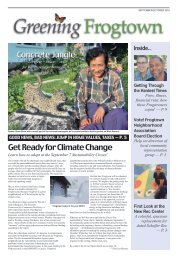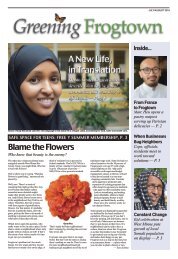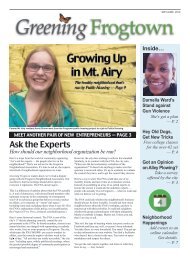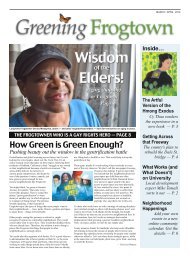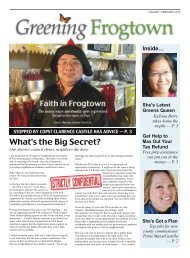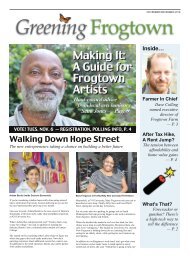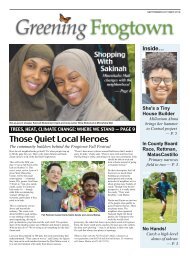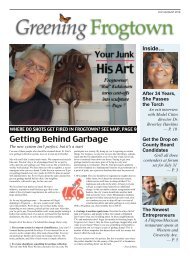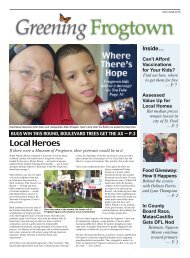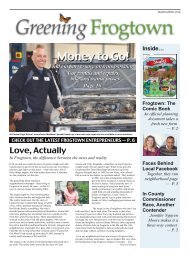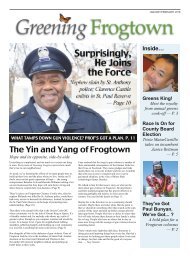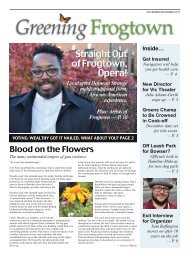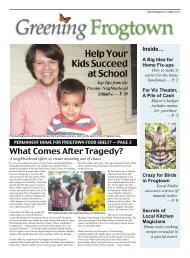You also want an ePaper? Increase the reach of your titles
YUMPU automatically turns print PDFs into web optimized ePapers that Google loves.
BIG IDEAS
A Public Health Solution to Gun Violence?
After meetings filled with hand wringing, a strategy emerges
In recent months there’s been no shortage
of chatter about gun violence, with the
NAACP calling a church basement
session, St. Paul Mayor Melvin Carter
conducting a series of three community
meetings, and the Frogtown
Neighborhood Association gathering a
number of anti-violence and youth
development reps for a forum.
But what to do to stem the flood of gun
violence that has left 27 people dead in
St. Paul in 201 9? The mayor offered a
plan to direct money for initiatives that
rescind a proposed fee for kids using the
after school Rec Check program; add
money to youth employment programs;
hire more community ambassadors to
connect kids to programs; and experiment
with a public health approach to curb gun
violence.
The last pitch raised a question. What is a
public health solution to gun violence?
Recently Danny Givens sat down to
explain his version of what this means.
Givens is director of violence prevention
for the St. Paul/Ramsey County Public
Health Department. He came to the role
by a non-traditional path, having been by
his own description “on both sides of the
gun” — someone who’s been shot, and
who served 1 2 years for shooting an offduty
police officer in a botched 1 996
It all starts with healing, says city/county violence prevention head Danny Givens.
robbery. In addition to his county job, he
is also pastor ofAbove Every Name
Ministries.
Givens says he got an on-the-street
picture of what is right and wrong with
our approach to gun violence when he
responded to a noon-time shooting in May
at Maryland and Arundel, where 21 -yearold
Marquez Perry-Banks was shot to
death in the street outside a convenience
store. For Givens it was a complicated
moment. The victim was his co-pastor’s
son.
“I was forced to respond not only as a
pastor, but as the director of violence
prevention,” he said. He saw the crew of
officials that gathers when there’s a
murder — the cops, the emergency med
techs, the coroner. Then he looked around
at the crowd watching from the nearby
apartments, and the people gathered in the
street. Realizing that everyone who
witnessed the scene had been touched by
this violence, he approached the
bystanders to give them his number and
tell them to call if they needed to talk.
Soon after, the event gathered another
level of complexity for Givens, who
knew the alleged shooter, Lavelle Darvon
Brown, as well. Brown’s young son had
died nine months earlier, said Givens, and
he had performed the funeral service.
“That particular act of violence was my
baptism on the job,” said Givens. “I was
walking with the victim's family to the
medical examiner for the death
certificate, going with them to survivor
resources, figuring out what happens at
the hospital, with the insurance, with the
first court appearance with the family.” In
the courtroom he looked around and
recognized the shooter’s mother. “I had
just buried her grandson and now she’s
across the aisle,” he said. “My heart was
in two places. It’s not necessarily
appropriate for me to walk over to her,
but as a pastor I have to. What is our
responsibility to the perpetrators of gun
violence?”
The experience underlined for Givens the
cascading and sometimes hidden effects
of violent acts. There are well-oiled
systems to take care of the victim’s body
and to find and prosecute the perpetrator.
But the trauma spills over onto parents,
siblings, neighbors, cops and bystanders
whose emotional unrest is often left to
fester.
—Continued, Page 12
PAGE 2 JANUARY/FEBRUARY 2020




